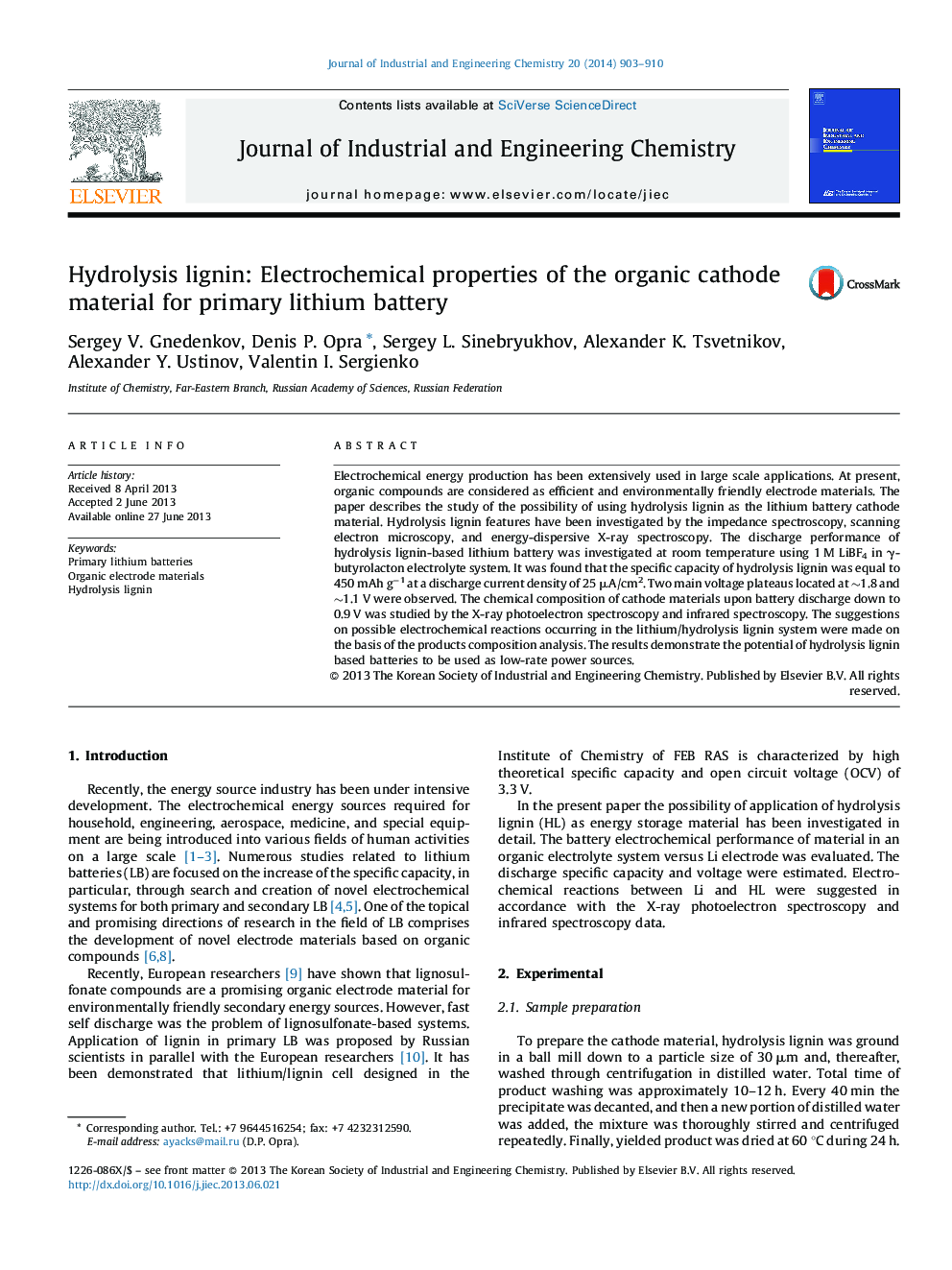| Article ID | Journal | Published Year | Pages | File Type |
|---|---|---|---|---|
| 228809 | Journal of Industrial and Engineering Chemistry | 2014 | 8 Pages |
Electrochemical energy production has been extensively used in large scale applications. At present, organic compounds are considered as efficient and environmentally friendly electrode materials. The paper describes the study of the possibility of using hydrolysis lignin as the lithium battery cathode material. Hydrolysis lignin features have been investigated by the impedance spectroscopy, scanning electron microscopy, and energy-dispersive X-ray spectroscopy. The discharge performance of hydrolysis lignin-based lithium battery was investigated at room temperature using 1 M LiBF4 in γ-butyrolacton electrolyte system. It was found that the specific capacity of hydrolysis lignin was equal to 450 mAh g−1 at a discharge current density of 25 μA/cm2. Two main voltage plateaus located at ∼1.8 and ∼1.1 V were observed. The chemical composition of cathode materials upon battery discharge down to 0.9 V was studied by the X-ray photoelectron spectroscopy and infrared spectroscopy. The suggestions on possible electrochemical reactions occurring in the lithium/hydrolysis lignin system were made on the basis of the products composition analysis. The results demonstrate the potential of hydrolysis lignin based batteries to be used as low-rate power sources.
Graphical abstractFigure optionsDownload full-size imageDownload as PowerPoint slide
